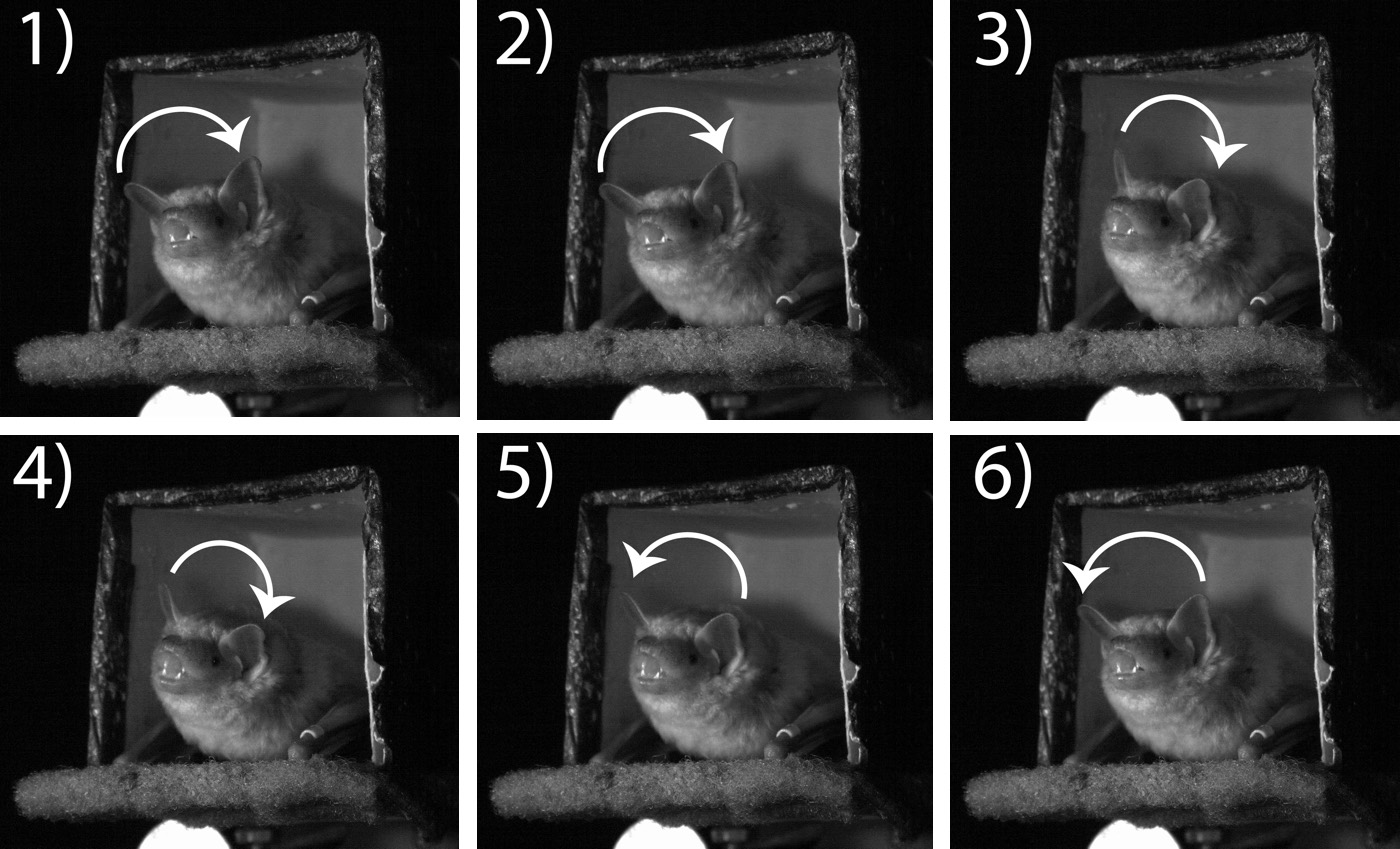Bobblehead Bats: Head Waggles Help Catch Prey

A puppy expecting a treat might cock its head to the side in anticipation. It turns out that bats make similar motions, and for very good reason.
New research published Sept. 8 in the journal PLOS Biology finds that bats waggle their heads back and forth to listen for approaching insects. This behavior increases as the quarry's movements become more erratic, strongly suggesting that the head motions help the bats pinpoint their prey, the study said.
"The sound is going to be hitting the ears in different ways throughout that dynamic process, and it's those differences the bats exploit," said study author Melville Wohlgemuth, a postdoctoral researcher at Johns Hopkins University in Baltimore. [Video: See the Bats Waggle Their Heads]
Processing echoes
Wohlgemuth said he and his colleagues are interested in the ways the brain integrates auditory information and vocalizations. Investigating bats is a good way to study this process: These animals track prey largely by echolocation, producing sounds that then bounce off solid objects, like insects. The bats hear these echoes and adjust their movements and future vocalizations to better capture prey.
The researchers train big brown bats (Eptesicus fuscus), a common North American species, to hunt in a rather laid-back way. Instead of flying to the insects, the bats sit on a platform while the researchers bring the prey toward the predators on a fishing wire. It takes about two weeks to train a bat to hunt this way, Wohlgemuth told Live Science, but they're generally pretty pleased with the setup.
"They're a little bit lazy, and they're more than happy to not exert the extra energy they need to catch the insect," Wohlgemuth said.
To track the bats' head movements, Wohlgemuth and his colleagues stick small reflective markers on each ear and the crown of the head for each bat. These markers allow the researchers to reconstruct the movements later, much like how video game makers use motion capture to create realistic animated characters.
Get the world’s most fascinating discoveries delivered straight to your inbox.
Complicated quarry
In the new study, the researchers attached mealworms to fishing wire and moved them toward the bats in different patterns. Some of these patterns were simple, like a direct path toward the bat at a constant speed, and some were more complex, like movement toward the bat, then two quick retreating motions, then movement back toward the bat.
When the prey's movements were more complex, the bat's head motions increased in frequency, the researchers observed. What's more, the head motions increased at the moments when the prey quickly changed directions.
"It's this correlation between difficult tasks and the increase in these dynamic behaviors that we cite as the explanation for their production," Wohlgemuth said.
Though bats don't usually sit and wait for their prey in the wild, Wohlgemuth said that video of free-flying bats shows that they, too, waggle their heads to better pinpoint the source of echoes.
Lots of animals tilt their heads to pinpoint sounds, including humans, Wohlgemuth said. Owls do it, and so do cats and dogs, he said. The brains of any animal with two ears can use information about how a sound hits the ears differently to gauge where that sound is coming from; bats just happen to have particularly impressive hearing and localization capabilities, he said.
The head waggles are only one piece of a process that involves a lot of feedback, Wohlgemuth said. Bats make vocalizations, process the echoes, and respond with changes in motion and new vocalizations.
Next, the researchers want to get a better understanding of the neural activity that makes all of this happen, they said.
Original article on Live Science.

Stephanie Pappas is a contributing writer for Live Science, covering topics ranging from geoscience to archaeology to the human brain and behavior. She was previously a senior writer for Live Science but is now a freelancer based in Denver, Colorado, and regularly contributes to Scientific American and The Monitor, the monthly magazine of the American Psychological Association. Stephanie received a bachelor's degree in psychology from the University of South Carolina and a graduate certificate in science communication from the University of California, Santa Cruz.


